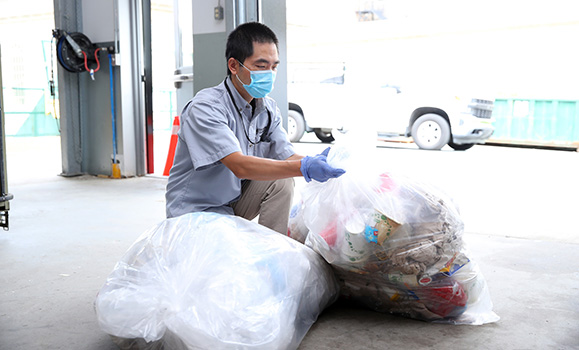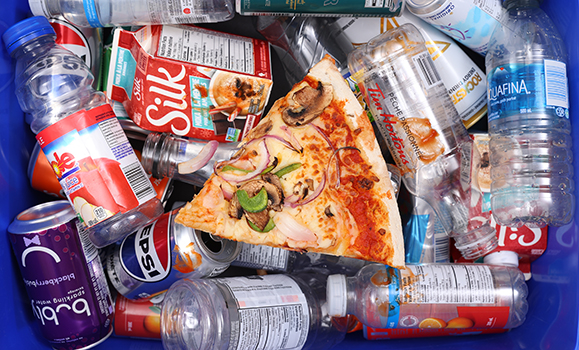What do one giant Pacific octopus, four gold bars and five Dachshunds have in common? They all weigh around 105 pounds. That’s also how much waste each person on Dal’s campuses generated on average during the 2022-2023 academic year.
If Dal is to meet its ambitious goal of diverting 70 per cent of all waste on campus by 2030, further improvements are needed, says Alexa Goodman, Dalhousie’s sustainability manager, who leads the charge on solid-waste education at Dal.
Dalhousie’s waste-sorting system has become a lot more robust since it made a big switch in 2013 to offer clear separation of each stream: garbage, paper, compost, and recyclables. Since then, the task has been ensuring people understand what goes where.
One particular issue that continues to cause frustration: contamination in compost bins. It’s a problem that Dal’s Facilities Management team faces daily and one the university is looking to tackle in the months ahead.
A new educational campaign, launching Wednesday (March 6), aims to help do so. Posters will be displayed in key locations across campus, including near high-traffic waste sorting areas in campus buildings, food-preparation areas in residences, in academic buildings, near campus vendors, and more. Messages will be shared on digital screens across campus and in social media channels.

Knowing what goes where might seem simple, but with students and employees coming to Dal from so many different places each year, mistakes do happen, says Goodman.
A collective problem
To illustrate the magnitude of the issue, consider this: in a year, the facilities team spends approximately 650 hours (about four weeks) tackling this "compost soup," dedicating roughly 2.5 hours daily to sorting through compost bins by hand. This labour-intensive effort is equivalent to six Titanic voyages from England to Newfoundland — a staggering commitment for a problem that arises from people’s small day-to-day choices.
The heart of the problem lies in people’s behaviour. Namely, placing non-compostable items in green bins designated for organic waste. The compost bins end up contaminated with plastics, utensils, and other materials that do not belong there.
Play your part
View and download Dal’s Waste Sorting Guide [PDF — 42.3KB]
Watch campaign video: Sort it out before tossing it out
Off campus? Use HRM’s What Goes Where tool.
Other types of contamination — such as when organics end up in recycling bins or garbage — add yet further work to the load.
The consequences of these snap decisions are far-reaching. The time and resources used sorting out the problem piles diverts from other valuable and critical priorities.
“Pulling staff off ground maintenance and infrastructure repair to sort through organic bins is less than ideal, taking away valuable limited staff resources that should be elsewhere,” says Michael Wilkinson, environmental service manager with Facilities Management.

A Facilities Management employee at work sorting.
Wilkinson added that the university can be fined if bins are not properly sorted.
“This is a collective problem, not a solitary one. As the adage goes, ‘One person's trash is another person's problem,’ and in this case, this is a problem shared by the entire Dalhousie community in Halifax,” says Goodman.
A smoother path to sustainability
A new campaign video illustrates that everyone has a role to play in waste management and that even small mistakes, when multiplied across the student body and staff, could amass into a formidable challenge.
As the Dalhousie community continues its journey toward reducing its environmental footprint, raising awareness, providing education, and fostering a sense of collective responsibility are key, says Goodman.
“The battle against compost contamination is far from over, but the determination to make a difference was stronger than ever," she says. "Together, we can ensure that compost bins remain a place for organic waste, free from contaminants. In doing so, we can make the journey towards a more sustainable campus a little smoother for all.”

Hmmm, something's not quite right here.
MORE RESOURCES
Learn more about waste sorting at Dal.ca/waste

